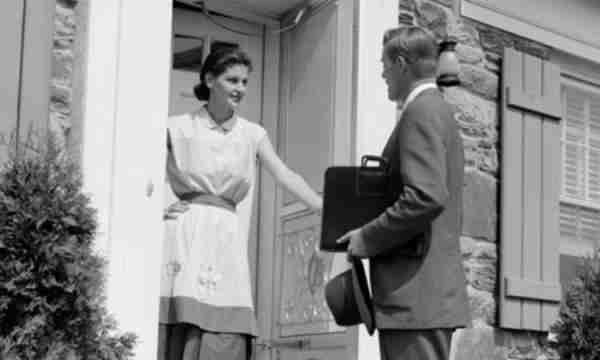Living in New York in the 1960s, I remember well-dressed men in suits and ties going door to door, selling vacuums, steam irons, and encyclopedias. It was a different era of which I am a little nostalgic. Being a pitchman hawking a product through a demonstration is a bit of the lost art of direct selling that I think modern-day entrepreneurs should reembrace and could learn from.
Within the discipline of sales is the element of “the pitch‘ or direct selling. What Is Direct Selling?
With direct selling, a business sells products directly to consumers. In traditional retail settings, products are sold online or at a physical store, however direct selling relies on salespeople getting in front of customers in non-traditional settings.
My first foray into business was with Invisible Fencing. Their model relied exclusively on direct selling. As a dealer, I was assigned a territory. I would advertise on TV and in newspapers to get leads and then I’d meet the customer at their home and demonstrate how our product would work in their specific situation before asking for the sale.
Just to be clear, “marketing” is communicating to the masses to create awareness and interest (One on Many), while “sales” is communicating with a prospect in a face-to-face fashion to demonstrate the product and close the deal (One on One).
With our overexposure to indirect sales or what is sometimes referred to as channel sales on eCommerce platforms like Amazon and self-service shopping experiences at places like Walmart, the art of direct selling, and more specifically, the function of demonstrating how to use a product, are increasingly overlooked by many entrepreneurs. As such, too many small businesses just focus on marketing alone and figure that their marketing message will be enough to allow channel sales partners to sell their products without direct customer contact.
This is not a new phenomenon. Today, many product producers spend all their time and money on marketing campaigns and then wholesale their products to retailers, who simply place them on their shelves for consumers to pick up or put into their online shopping carts. In these situations, there is no personal connection between someone representing the product and the customer. Most entrepreneurs think this is the right way to sell stuff today since these are the most common examples they see. The problem with this incomplete level of thinking is that consumers rarely get the full benefit of their purchase without being exposed to a full demonstration by a pitchman. And without being fully able to appreciate how a product works and what it is used for, they have much fewer reasons to share the story of their purchase with others through word of mouth.
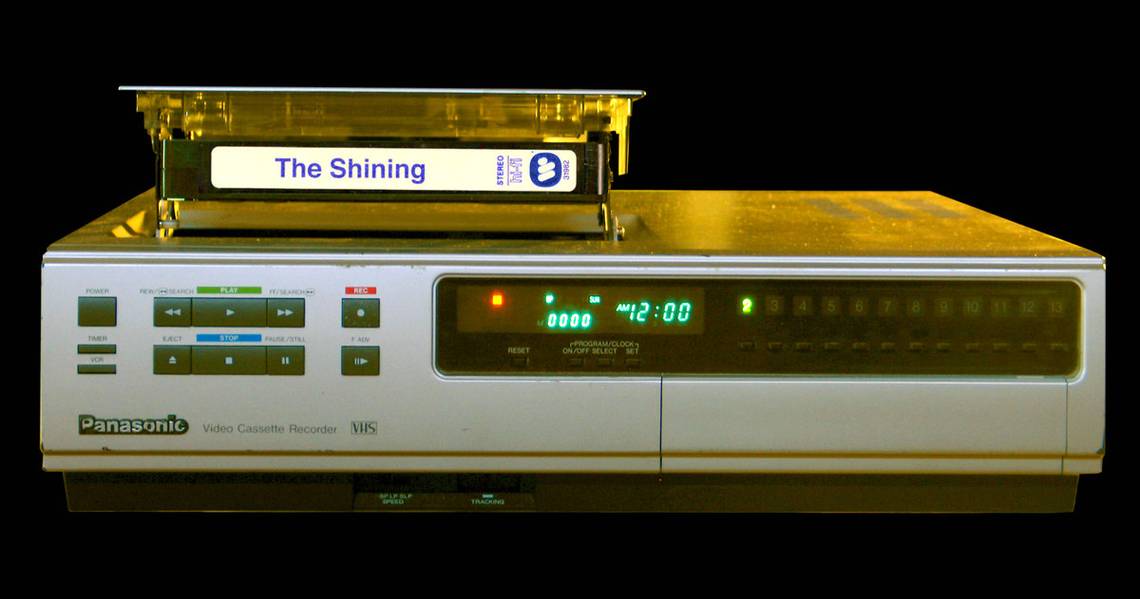
A classic example of a product that needed a pitchman but never had one was the VCR. I remember walking into many a home in the 1980s and being greeted by a VCR with “12:00” flashing away. This was especially true when I would visit my parent’s home. The value proposition of the VCR was that you could record your favorite TV program while you were away, so you could watch it later at your convenience. However, to make this recording feature work, you had to first set the clock on the VCR. To record a program, you had to enter the start and end time and the channel of the program that you wanted to record. While this may seem like a simple idea today, it required programming which was foreign to most users in the 1980s.
VCR manufacturers invested heavily in marketing to get you to buy their VCR. Once home, the box contained a user’s guide with instructions on how to program the VCR. Most people, such as my parents, got so confused and frustrated with the programming feature that they never used it. If they wanted to record a TV program, they simply waited for the program to start and then hit the record button. Even though the VCR was capable of recording one channel while you watched another, my parents never learned to use this feature. This is because their entire exposure to the product was through a 30-second commercial they saw on TV or a paper ad, and a user guide, likely written in Japanese and translated into English. What was missing was the pitchman to demonstrate the “How,” while a 30-second commercial or ad could only deliver the “What”.
The lost art of the pitchman, who was part entertainer and part businessman, is a valuable skill that too many entrepreneurs simply neglect to appreciate. Nowadays, in our daily lives, we rarely ever encounter pitchmen and direct selling situations. The last time I saw one in person and in action was when I attended the state fair. I recall a guy in a makeshift kitchen, with a wireless headset microphone, demonstrating a cookware set to a group of people as he cooked several dishes in real-time and answered questions from the audience. The only other time I’m exposed to a pitchman is when I watch QVC or a similar station.
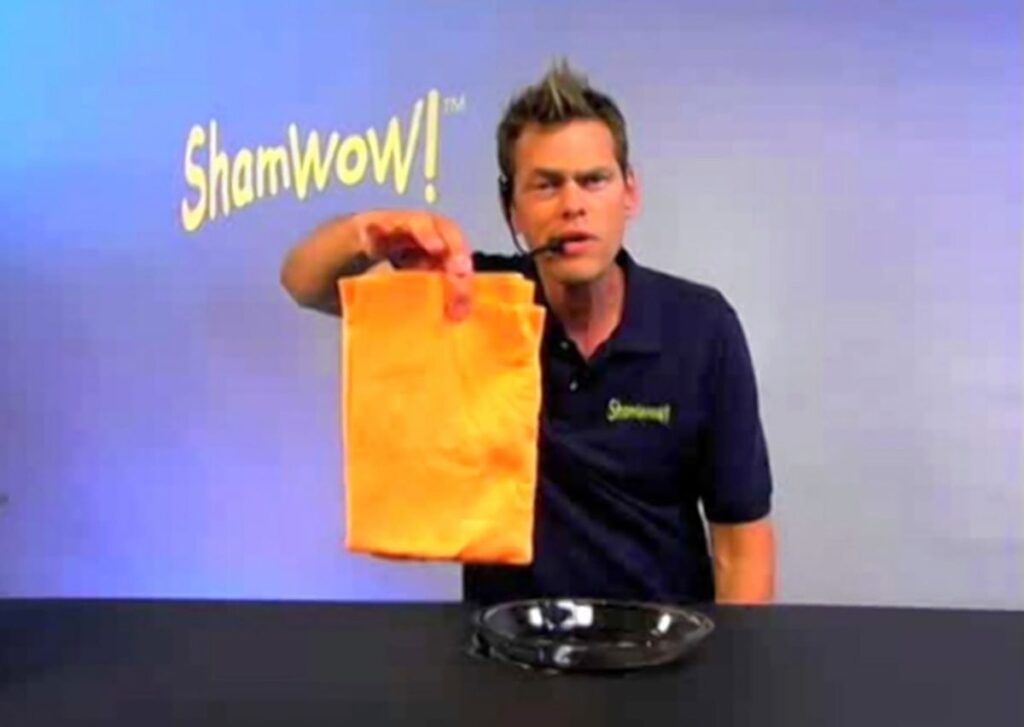
Pitchmen have often been associated with infomercials because of the long-form nature of infomercials. Late-night infomercials spanned 30 minutes or more, not 30 seconds. This way, the pitchman had the luxury of time to demonstrate how to actually use the product by putting it through its paces.
The History of The Pitchman and Direct Selling
It is funny that in a time not that long ago, pitchmen were much more commonplace. Pitchmen were contracted by a product company to sell products directly to consumers, often door to door. Rather than selling products in a department store as many companies do today, a salesman with assorted samples would either go door to door or stand on a busy street corner, searching for people to whom he could demonstrate his products.

In the beginning, many pitchmen were door-to-door salesmen. The iconic door-to-door salesman was the Fuller brush man. Door-to-door pitchmen soon found that politeness and helpfulness were absolute necessities to get the opportunity to pitch their product. Many door-to-door pitchmen sold products to benefit housewives and generally showed up with a free gift as an inducement for the lady of the house to grant him the opportunity to demonstrate and pitch his product.
The most successful door-to-door pitchmen were charismatic and had strong personalities because people like people with confidence. Most pitchmen of the day used a clever direct sales trick, they chose to visit housewives on weekdays during hours when their husbands were at work. Even though many of the items they sold could be found at local department stores, the pitchman realized that not only did women not go shopping as often as they do today but that it was much harder to say “no” to a well-dressed salesman standing on their porch, knowing that this is how he made a living to support his family.
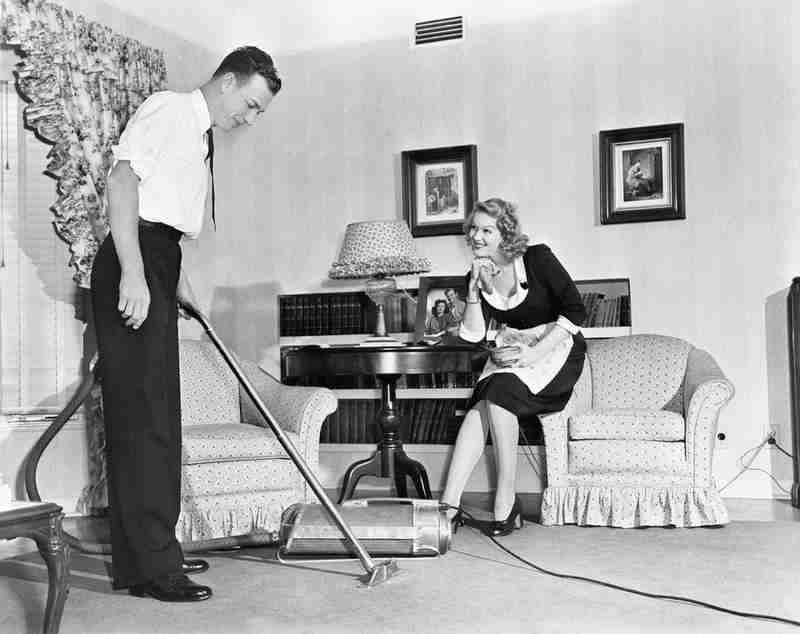
Moreover, the pitchman understood the value of reading the room, doing a live demonstration, and being there to answer questions before switching from being an entertainer to a businessman and closing the sale. Some pitchmen who sold vacuums were even known to bring their own dirt so they could fully demonstrate just how effective their product was.
Being polite and respectful paid dividends. On inclement weather days, many door-to-door pitchmen chose to wear loose-fitting footwear. That way, if they got invited into the home, they could quickly and easily step out of the wet or snow-covered shoes.
Once inside, the pitchman generally offered to help the homemaker with her everyday tasks such as folding clothes or cleaning, to give him a few minutes of conversation and build a rapport. Since most products were designed to make the lady of the house’s job easier, he would look for tasks that would prove the worth of what he had to sell and allow him to demonstrate all the features of his product. If he sold a cleaner, he would offer to clean her counters, if he sold a vacuum, he would offer to clean her carpets. In doing so, he would demonstrate how to use the product properly to maximize its benefits.
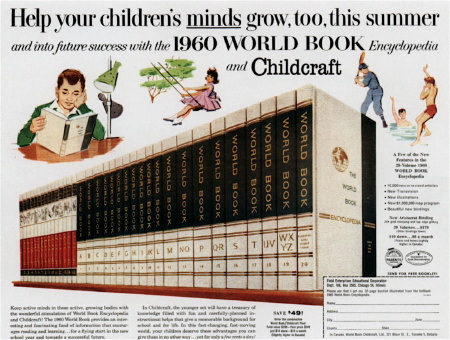
One very specific pitchman I can remember growing up sold World Book encyclopedias. He knocked on our front door and my mom invited him in. We sat at our kitchen table while he flipped through the pages of one of the volumes to show my mom and me how the information was laid out specifically to help students like me with homework and school projects, so I could get better grades. I remember seeing the incredible number of color pictures and maps and even a series of acetates that allowed you to peer into the human body as you peeled away layers. The pitchman knew how to read the room and tailor his message to my mother. I knew that the cost for the set of encyclopedias was not cheap and it was very unlikely that my parents would have bought the set since they already owned a set of encyclopedia Britannica. He knew just how to appeal to my mom’s maternal instinct when he made it clear that “great parents” invest in their kids’ education and what better way to do that than to have a full set of World Book encyclopedias in your home. He knew that if she chose not to buy the encyclopedias, she would most likely feel awful not supporting my educational needs.
Pitchmen were often not traditional salesman, employed directly by the manufacturer. Most were considered independent contractors. In this way, pitchmen were in charge of their own success since no sales meant no money. Pitchmen frequently had to buy the actual products and samples they sold, including the gifts many offered to the lady of the house if they were invited in to give their demonstration. If the pitchman made a sale, he submitted the order to the manufacturer and collected a commission.
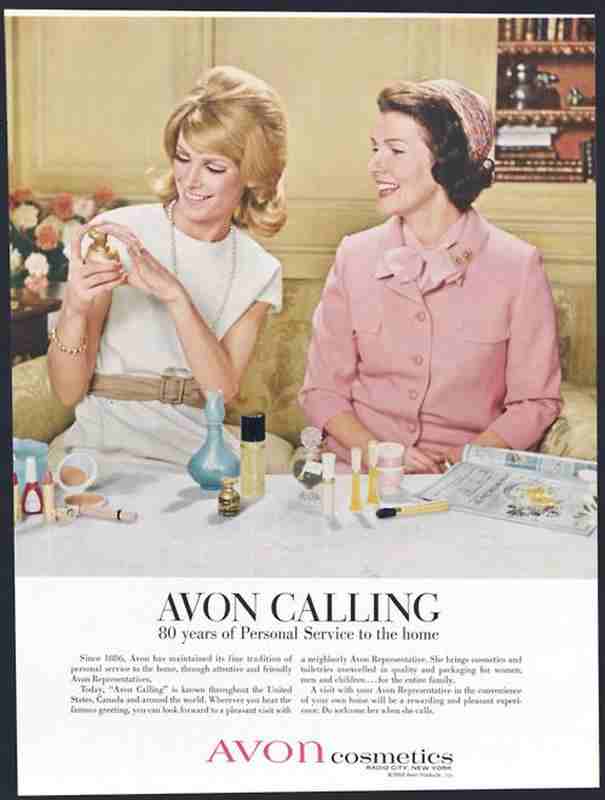
In the early days, pitchmen were mostly men. Avon ushered in the modern era when pitchmen no longer had to be men. It took a woman’s personal experience to really demonstrate beauty products. Actually, the first really successful pitchwoman to my recollection was Madame C.J. Walker who sold hair care products to black women.
Over time, the evolution of the pitchman changed from one-on-one door-to-door sales to home parties where pitchmen could demonstrate their products to several women at once. The home party method of direct selling was first introduced by Stanly Home Products and was perfected by Miss Brownie Wise in what became known as Tupperware parties.
Today, many home parties have turned into multilevel marketing programs and include company products like Amway and Pampered Chef and as a result, direct selling has gotten a bad rap.
The Value of the Direct Selling Close
The pitchman is often associated with infomercials like Billy Mays and Ron Popeil who were masters of the “Turn”. The turn for the pitchman was when they switched from being more of an entertainer to a businessman and closing the sale. The informercial turn often used the “Countdown close”. Certainly, you have heard this kind of similar close: “You would probably expect to pay over $200 for this in stores. But you’re not going to pay $200… Not $180… Not $160. Today, you can have this amazing product for just $120.”
At this point, the buyer is just about ready to buy but the pitchman knows his craft and adds on some additional value with the statement “But wait, there is more”. They might agree to double the order or add a related product at the same price.
They then add the pitchman’s closure to create a sense of urgency. “Once I walk out that door, I cannot offer you that price again.” At this point, about one in five prospects agree that this deal is too good to pass on and agrees to buy right then and there.
Once the sales contract was signed, many pitchmen would take the opportunity to upsell. In the case of that encyclopedia salesman, I recall that once my mom agreed to buy the set, he took the opportunity to upsell her with the annual updates to ensure that the set remained up to date with the latest information. I remember that for the next few years we received annual World Book encyclopedia yearbooks.
A few days later, the pitchman would return with the product and ask the customer if they knew anyone else that would also like to hear his pitch and receive a gift.
Conclusion
Many businesses that sell products would benefit from honing their direct selling techniques. The following are some lessons that the modern-day business owner can learn from the pitchmen of old:
- Have a prepared demonstration and include props like dirt for a vacuum or food for a cookware product to make your points resonate with the prospect.
- Be prepared to educate the buyer on how to use all the features of your product and how it will change their life.
- Offer a free gift as an inducement for a prospect to hear your pitch. This is a common way for timeshare pitchmen to get you to hear their pitch.
- Be polite and helpful before you launch into your pitch, to get to know the prospect, build rapport and read the room.
- Be charismatic and have a strong personality because people like people with confidence.
- Pick a time when you can pitch without being distracted by naysayers the same way that many pitchmen went door to door during the day when husbands were at work.
- Recognize that it is harder to say “No” to a real person especially if they come across as a nice and sincere person.
- Appeal to a higher motivation like the encyclopedia salesman saying that great parents want to educate their kids. It is much harder to say no when you set a high moral bar.
- Consider using house parties and offer gifts or special pricing to the hostess as an inducement to have them host the house party.
- Know when to make the turn and switch from being an entertainer to a businessman and close the deal.
- Ask for referrals when you deliver your product.
How can you use the lessons of the pitchman and incorporate direct selling in your business?

